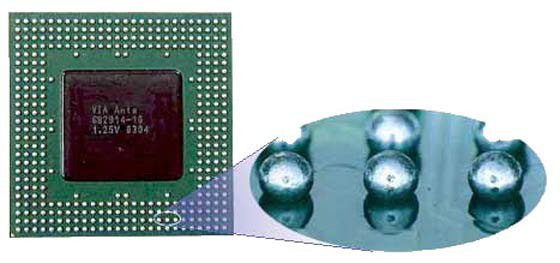First and foremost, at least from Intel's point of view, is that this move puts the chip giant in an even more commanding position, allowing it greater control over the motherboard market. More control means more money.
I call this a monopoly flat out, and it goes against every anti trust law that was ever created. And with statements like this they might was well sue themselves because it's just a matter of time before someone else does.
No, it is not a monopoly or fall under anti-trust law. Please look them up. You still have choices.
While they may be able to control the prices of there own products, they won't control the price of AMD or other competitors that may come along.
While it doesn't seen that Intel wants to cut existing motherboard makers out of the equation just yet, sources I have spoken to seem to be worried that this could happen in the mid-to-long-term.
I won't get into the fact that this move offers ZERO advantage to the consumers who have supported Intel over the years.
This is about cooperate take over of the entire PC industry, they don't like people being able to build their own machines because that removes money from their till and I'm certain this has something to do with hurting sales of OEM machines, which to me is tough luck for company's like HP who sell nothing but cheap substandard Chinese made POS.
No, they can not take over the entire PC industry. That is impossible with AMD in existence.
The OEM's can make their own choices of weather to carry Intel products or not. If I start a business building PC's, I can choose to only use AMD exclusively. Intel can not force me to sell their product.
This statement proves my point:
As far as the PC OEMs are concerned, killing off the PC upgrade market would be a good thing because it would push people to buy new PCs rather than upgrade their existing hardware. The PC industry is currently stagnant, partly because consumers and enterprise are making existing hardware last longer.
I'm sure they hope that this move will kill the PC home building industry, what they don't realize is that it will end up hurting sales from many thousands of home PC builders and this market is bigger than some people think.
The casualties of this move will be upgraders and PC 'modders', the huge market that exists around them. While not many people bother to upgrade their PCs, instead choosing to buy a new one, the market is large enough to support countless manufacturers and vendors. This move by Intel would be the final nail in the coffin for this industry, taking down a number of players. This, unfortunately, would have a corresponding knock-on effect on jobs.
Of course there will still be enthusiast boards with high end CPU's already installed and other high end hardware but having Intel control all that is where the anti trust laws will be broken.
Only so much as if AMD follows suit. This is why Microsoft has never been a monopoly either, even though many want to scream that from the roof tops, they are so wrong, it make 2+2=3 seem legit.
mo·nop·o·ly
[muh-nop-uh-lee] noun, plural mo·nop·o·lies.
1. exclusive control of a commodity or service in a particular market, or a control that makes possible the manipulation of prices.
You can argue Duopoly and Oligopoly.....
2. an exclusive privilege to carry on a business, traffic, or service, granted by a government.
Such as Ma Bell
3. the exclusive possession or control of something.
Which neither Intel or AMD control
************
an·ti·trust
adjective
opposing or intended to restrain trusts, monopolies, or other large combinations of business and capital, especially with a view to maintaining and promoting competition.
Something that Intel is not trying to do here. Which Microsoft, I believe was guilty of in the 90's with the OEM's.
By preventing OEM's from installing or providing support for OS's like OS/2 and Linux, if I recall.
Now it is up to the OEM's iof they want to provide that support, they are not obligated to do so.
Let me also add this.... If a widget maker makes something that I can produce cheaper, they can not control the fact that I can sell my item for much cheaper than theirs. However, if I can produce it at about the same cost and I sell it at a loss, under cutting the competition to drive them out of business just so I can raise it again later, that is under cutting.
The difference between Fair Trade and Free Trade is....
Fair Trade means I can produce a better product, but can not sell it for more than the competition
Free Trade means I can build a better product and ask the price that I believe is fitting and still be able to sell it.
Fair Trade = Govt control of pricing......
Free Trade = Consumer control of pricing....
and On a final note,,, at the end of the day,, Intel can do what they want... If people decide to stop giving them their money they go out of business. The dollar you don't give to a company has much more profound effect on any said company/industry than any regulations could ever hope to. That goes for any industry.
You just have to be willing to live without their products. ... If you can't,, don't handsome frog about it.
One last note.... Free Trade and Healthy Competition will always,, Always produce better products and a more prosperous society.









